Under Aurora, observing northern nature
Lights of the north
If you could examine Earth from outer space, you would see how our planet traces an ellipse around the Sun. The distance to the Sun remains almost the same at all times. One round takes one year.
Because the Earth is in orbit around the Sun at an angle of 23.5 degrees, sunlight reaches the surface of the globe unevenly. As the Earth orbits the Sun, the southern and northern hemispheres face the Sun by turns. When it is winter in Finland, it is summer in Argentina. This explains the uneven distribution of sunlight on the Earth and the changing seasons.
Our amazing Sun provides light for the pale Moon and some of the stars twinkling in the sky. Even the northern lights, the Aurora Borealis, originate in the Sun.

Northern nature is miraculous. The Sun, the basis of all life, gives light and warmth unevenly in the north. In winter, there is very little sunlight and, in mid-winter, the Sun remains completely hidden for a period.
In summer, there is sunshine round the clock. In winter, nature is not black, gloomy and completely without light but clear and beautiful. The white, shimmering snow, the stars, the Moon and Northern Lights bring light to the landscape.
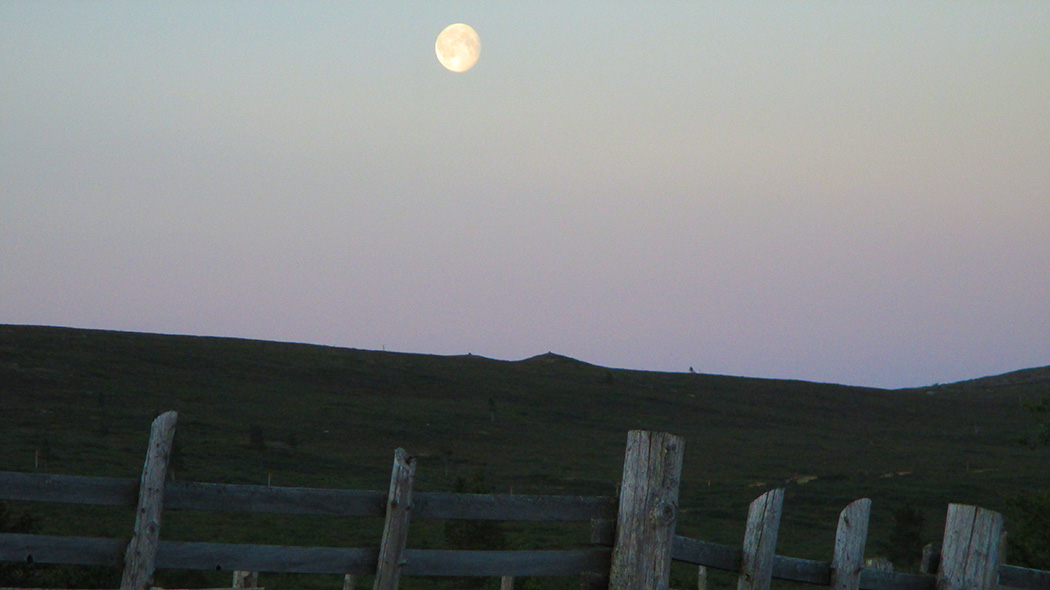
Northern nature is beautiful, but austere, with a limited number of species. The animals and plants in the north have adapted to the harsh conditions. Intense seasonal variation is a characteristic of northern nature.
Winter is the dominant season. In Saariselkä, winter lasts for more than half the year. Mid-winter is the time of polar night. The Sun does not appear at all. Spring and autumn are brief, intense periods. In summer, there is abundant sunlight. In Saariselkä, 250 km north of the Polar Circle, northern nature can be seen at its best.
Polar night
Winter is long, cold and dark in the north. There is very little sunlight and the polar night occurs in the middle of winter. This is the period during which no sunlight is seen north of the Polar Circle and latitudes above it. During the polar night, the Sun does not rise above the horizon at all.
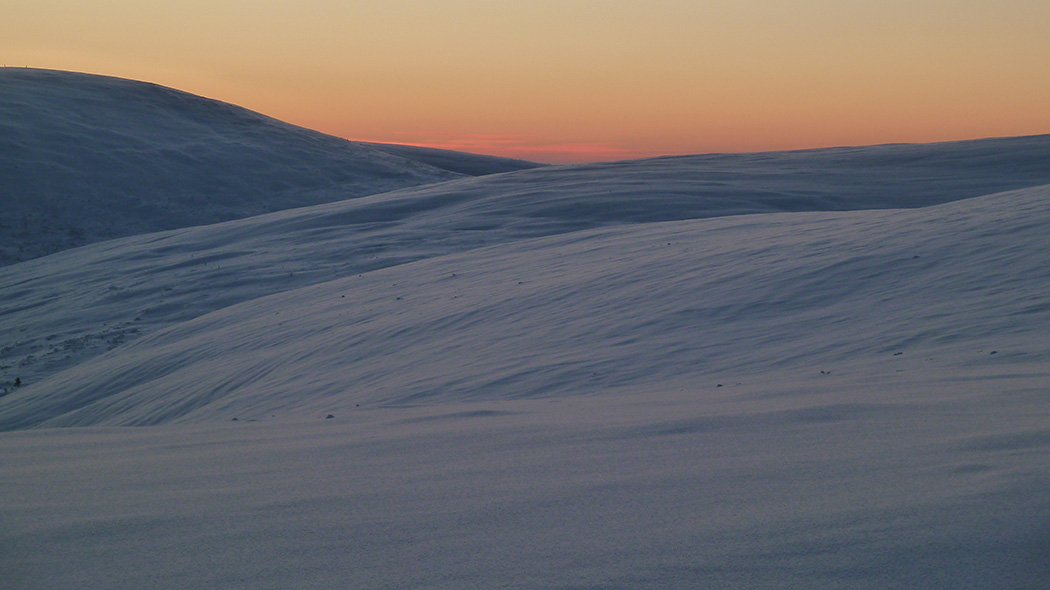
The closer to the North Pole you go, the longer the polar night is. In Nuorgam, Finland's northernmost village, the polar night lasts almost two months, from 25 November to 17 January. In Saariselkä, the polar night period is from 3 December to 11 January. The distance to the Sun is longest at the time of the winter solstice, around 21 December. From then on, the days gradually lengthen, at first by around 5 minutes per week.
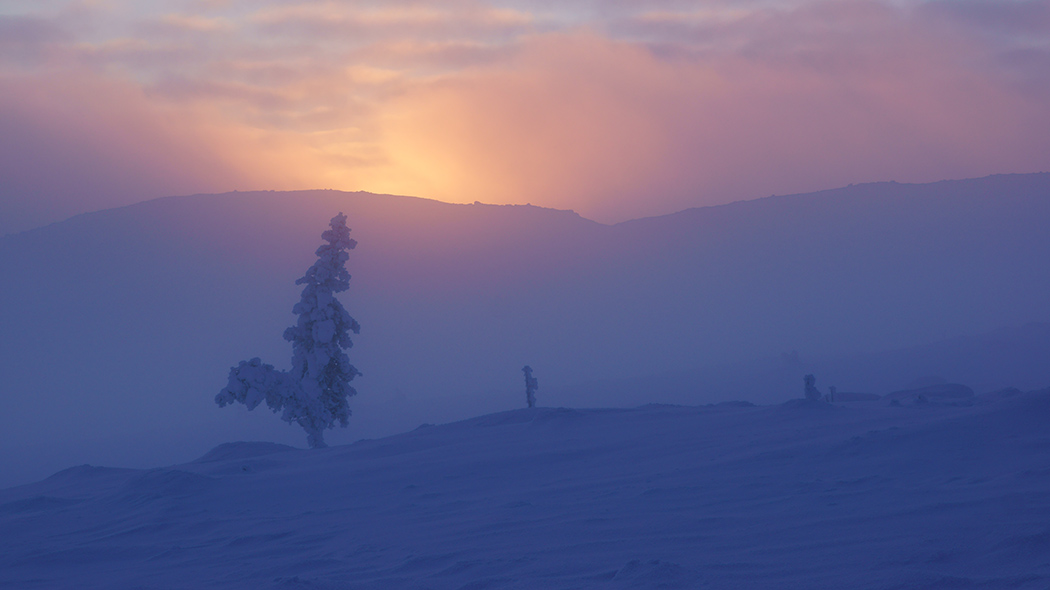
Northern nature is not entirely gloomy and dark, even during the polar night. The white shimmering snow, the pale moon, twinkling stars and the Northern Lights dancing in the sky bring light to the polar night.
Winter and the polar night are not an exceptional situation for animals, plants and people in the north. Animals and plants have adapted to frugal life in winter. People go about their everyday business as usual, at work and leisure, but may need more sleep during the dark period of the year.
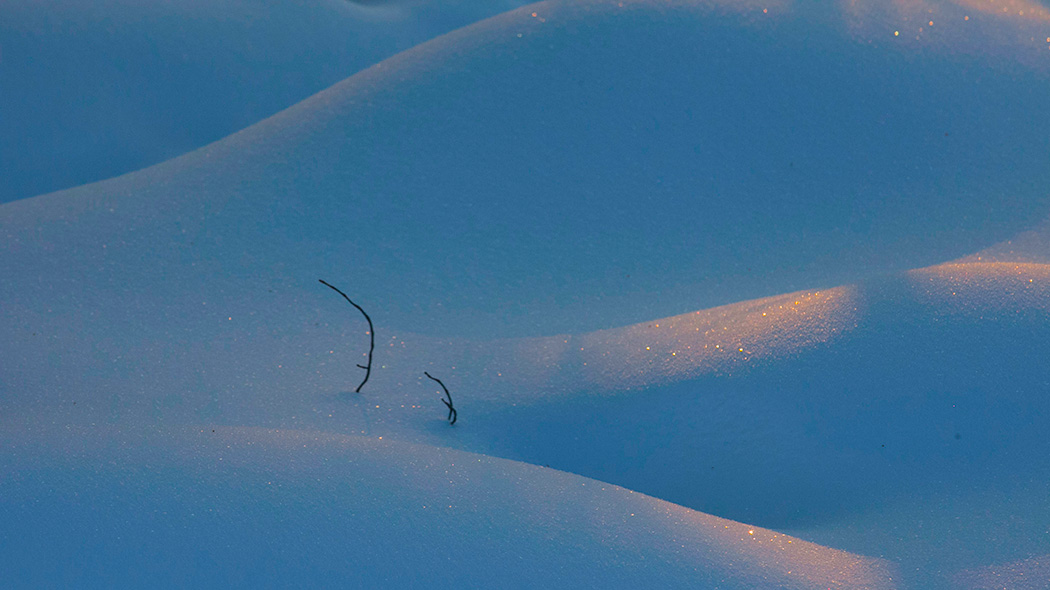
Aurora Borealis – a natural spectacle in several acts
The blazing Aurora Borealis, or northern lights, captivates spectators and can fire up the imagination. Aurora Borealis originates in the Sun. Electrically charged particles from the Sun travel towards the Earth, circulating toward the polar regions as they flow around the magnetic fields of the globe. As the particles enter the Earth's atmosphere and collide with air molecules, they release energy. This creates the magnificent light display which can be admired in the polar regions.
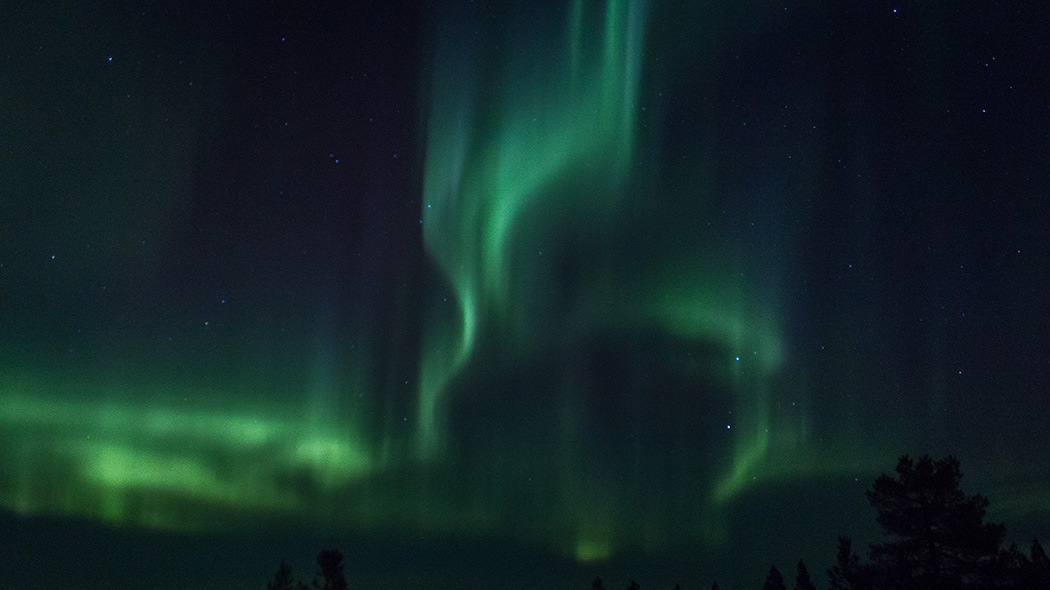
It all begins as greenish yellow, arc-shaped northern lights gradually appear in the sky. Within a couple of hours, the colours brighten, the shapes sharpen and the blaze intensifies. Even red, blue and purple hues can be seen in the Aurora Borealis as it flickers across the sky. At times, Aurora Borealis may slow down in the middle of the sky, forming a crown-like corona overhead. This display can keep recurring until dawn.
Northern lights can appear on up to 200 evenings / nights of the year. In summer, when the sun is shining, hardly any auroras can be distinguished in the sky. In clear weather, they generally appear between 6 pm and 2 am, being most spectacular around 9 to 11 pm. The human eye requires about half an hour to adapt to seeing in the dark. If you want to observe the northern lights, you should move away from artificial light.
Under the North Star
It is always fascinating to watch the stars in the sky. Thousands of stars may twinkle in a cloudless sky. The Sun is the star that is closest to the Earth. The times when the stars appear in the sky, and their location, vary according to the seasons and time of day, and the geographical location of the watcher.
Stars do not last forever; they are born, live and die. The youngest stars are not even one million years old!
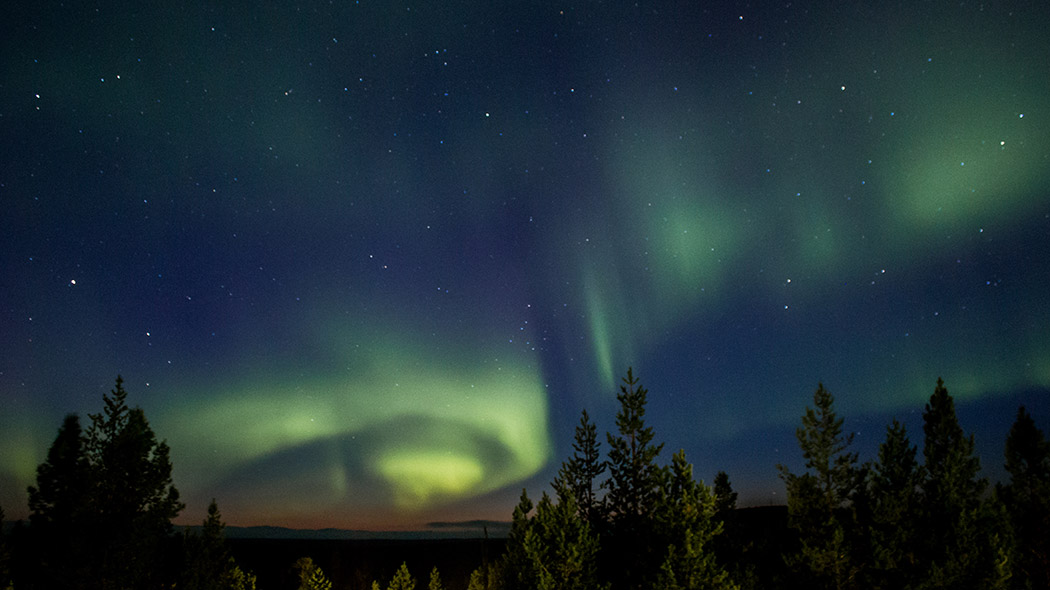
The planets closest to Earth – Mercury, Venus, Mars, Jupiter and Saturn – shine brightest in the sky. If you observe a starry night sky in the dark, you will see the so-called Milky Way. It contains innumerable, distant stars whose light is weak.
Orion is a constellation that can be seen in Finland. It consists of several bright stars and can be seen in the southern sky on winter nights.
If you look closely, you will be able to spot various constellations. The Big Dipper or Plough, probably the best-known pattern in the northern sky, forms part of one of the largest constellations, the Great Bear (Ursa Major). The seven bright stars of the Plough form a dipper-like pattern. The last two stars of the dipper's handle provide a direct orientation towards the bright North Star, Pole Star or Polaris, the brightest star of the Little Bear (Ursa Minor) constellation.
The Little Bear is also called the Little Dipper, because its pattern resembles the Big Dipper. The North Star is anchored almost in the middle of the sky and is located closest to the celestial pole. All stars are said to rotate around the celestial pole. In the north, the North Star is also traditionally known as "the northern nail", because it seems to be fixed in the middle of the sky and even to support it.
The North Star always indicates where north is. People have been able to navigate since ancient times by pin-pointing the North Star and observing the starry sky in general. Birds are also said to navigate with the help of stars.
According to popular belief, when you see a shooting star – a meteor – you can make a secret wish that will come true.
Halo – the light of ice crystals
The optical halo phenomenon is created when light from the sun or moon is refracted by ice crystals floating in the air. Halos may appear in the sky in the form of arcs, full circles or vague, bright shapes. The structure of crystals and their position in the air, and the height of the light source, influence the form of halos.
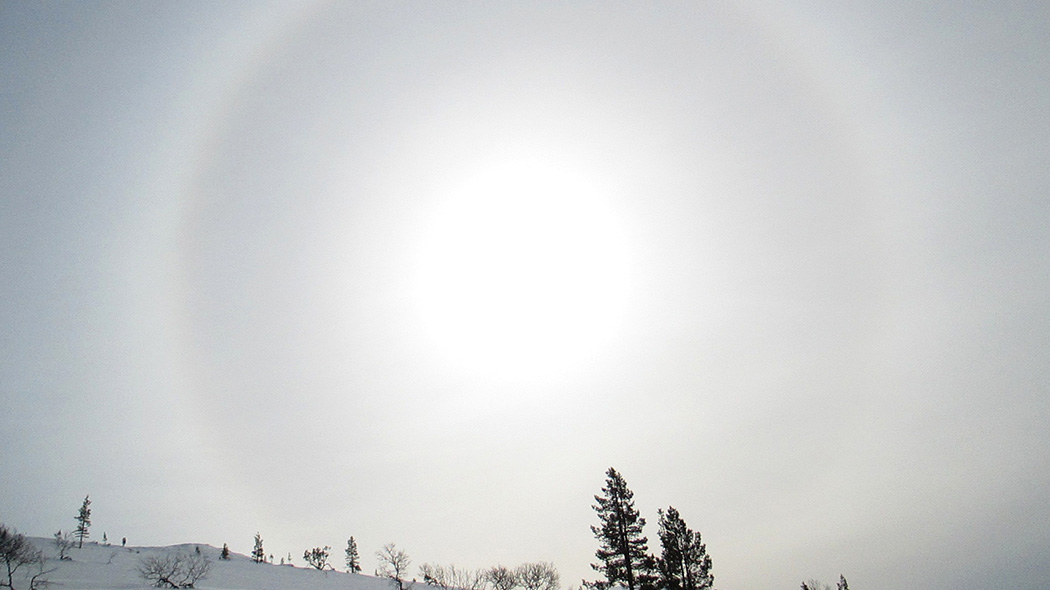
Halos most commonly occur close to the Sun, Moon or artificial light. In favourable conditions, various forms of halo may fill the sky. The most common halos can even occur on a hundred days per year.
Humans have always observed nature, read natural signs and predicted weather conditions in the short or long term. According to folklore, a disc around the Moon, a halo, means that a snowstorm will occur in the next few days.
Northern midnight sun
On the vernal equinox, on 21 or 22 March, the days and nights are of equal length everywhere in the world. From then on, the days lengthen by leaps and bounds, by several minutes per day. The amount of sunlight increases considerably, as the year moves towards summer and the period of the midnight sun.
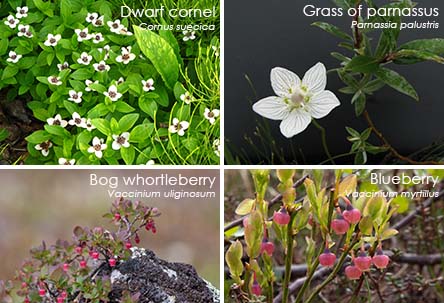
In terms of temperature, summer begins when the average daily temperature is above +10 degrees. In Saariselkä, it lasts for only two months. The sun shining through the night prolongs the growing season. In Saariselkä, the period of midnight sun when the Sun does not set below the horizon at all, lasts from 22 May to 20 July.
Abundant sunlight allows all forms of activities, at work and leisure, even in night-time. In summer, people may also feel that they need less sleep than in winter. An angling trip or hike on a summer night is always a unique experience.

Reindeer herders traditionally work at night for a couple of weeks during the calf marking period, because it is too hot to keep the reindeer fenced in during the day. The marking of reindeer calves born in late spring is hard work, but it is also a kind of celebration of the midnight sun.
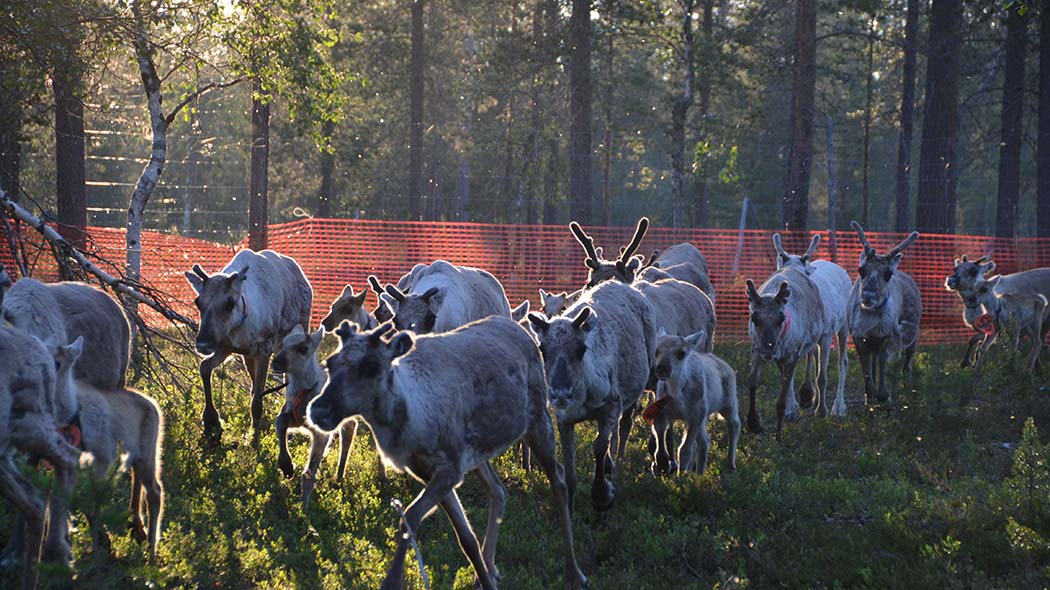
The Moon, a fascinating satellite
The Moon is the second brightest object in the sky after the Sun. The Moon has no light of its own, but reflects sunlight. The same face of the Moon is always turned towards the Earth. The different phases of the Moon depend on which part of the Moon is lit by the Sun. The Moon usually casts a pale light, making it seem mysterious and fascinating.
The Moon is a satellite of the Earth and is in an elliptical orbit, while the Earth rotates around the Sun in cycles lasting one year. The Moon orbits the Earth 12 times a year, and one cycle takes approximately one month, i.e. 27 days, 7 hours and 43 minutes.
The Moon is full when the Sun shines onto the Moon from behind the Earth. When the cycle continues, the Moon becomes a crescent or waning moon. A new moon occurs when no sunlight is lighting the part of the Moon visible from the Earth. When the cycle continues, the Moon becomes a crescent again, a waxing moon.
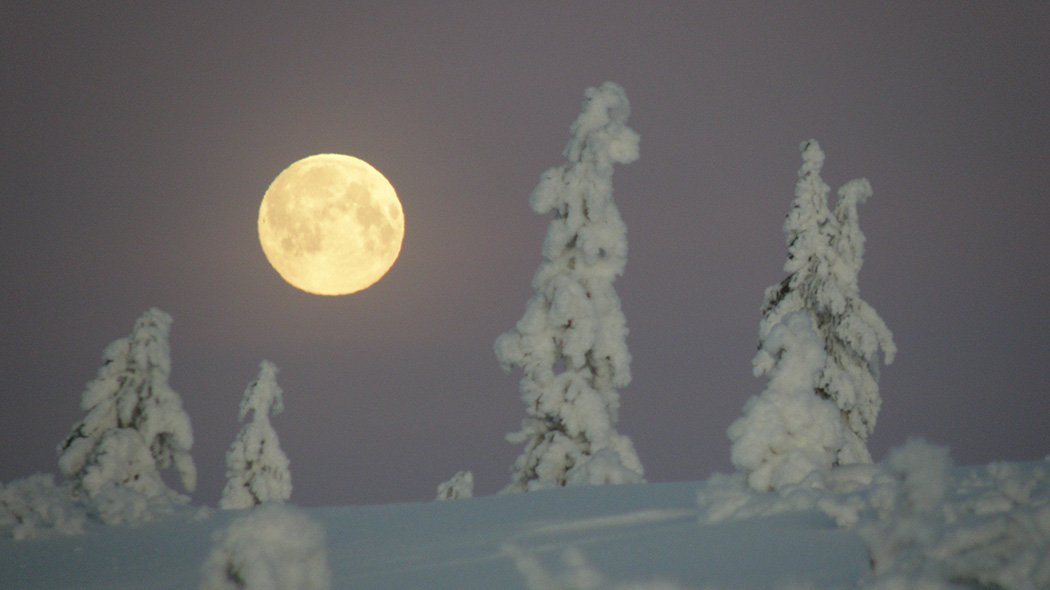
People have followed the phases of the Moon throughout the ages. According to folklore, certain tasks are best accomplished when the moon is waxing. For instance, a sauna bath whisk made of birch will not shed its leaves if it is made during a waxing moon. According to Sámi tradition, the grass kept inside fur shoes to keep one's feet warm must be cut in the summer when the moon is waxing.
